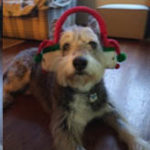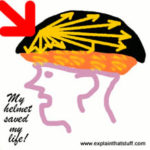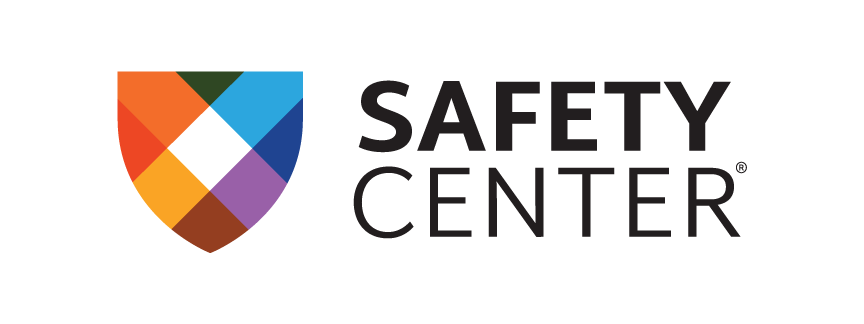Middle School Safety Tips for Parents and Youth
To SEE, Scan with Eyes and Ears to Be Safe
Pedestrians, bicyclists and drivers of motor vehicles have to be constantly scanning with their eyes and ears to be aware of what is going on around them.
Phones are the biggest distractions. Parents are role models and so we are asking for your commitment to no phones in school zones and to reinforcing SEE, scanning with eyes and ears to ensure the safety of our youth at school and in the community.
To SEE, Scan with Eyes and Ears to Be Safe

Safe pedestrians, bicyclists and drivers of motor vehicles are constantly scanning not only with their eyes but also listening with their ears so they aware of what is going on around them.
Our friend Massey cannot hear cars when he has ear buds on. Can you?
Phones are the biggest distractions and cause “inattention blindness” where people do not see 50% of what is going on in the environment around them. Parents are role models and need to demonstrate safe behavior by not using phones while driving.
To Be Seen, Wait to Until to Make Eye Contact with the Driver Before Crossing the Street
Students are taught to look left, look right and look left again before entering a crosswalk. Due to the increase in distracted driving, it is equally important to WAIT until you make eye contact with the driver so you know they see you and to WAIT until the motor vehicle comes to a complete stop before entering the crosswalk.
Streets around schools are busy during drop-off and pick-up times and there are distractions inside and outside the motor vehicle taking the driver’s attention away from the task of driving. A study by Safe Kids showed 10% of parents were driving distracted in school traffic zones. Distractions cause “inattention blindness” and drivers miss seeing 50% of what is going on in the driving environment around them.
Safety rules for pedestrians:
• Always use crosswalks
• Look left, look right and look left again
• Make eye contact with the driver
• Wait for motor vehicles to come to a complete stop
Parents are role models and need to demonstrate safe behavior by not using phones while driving and reinforcing the importance of youth being “seen” by making eye contact with drivers before crossing the street.
See and Be Seen
Avoid Blind Spots
If you can’t see the driver’s eyes, then they can’t see you. All vehicles have no zones or blind spots that prevent drivers from seeing everything around them.
• Parking Lots – Driver’s use side or rear view mirrors when backing up and you must able to see their eyes so you know that you are not in their blind spot.
• School Zones – Parked cars, passing traffic, bushes, and other people may blocking the driver’s view so it is important to see their eyes and to make eye contact.
The link below shows vehicle blinds spots:
https://www.dmv.ca.gov/portal/dmv/detail/pubs/hdbk/scanning#lookingahead
Avoid blind spots or other vehicles, pedestrians and bicyclists blocking the driver’s view. To be seen, look for the driver’s eyes and make eye contact.
Bicycle Safety
Bicycle Helmets Save Lives
Club Live students conducted an observational survey showing that (XX) of bicyclists at (name of school) wear helmets and they want to get to 100% because it protects your head when you fall off your bike, skateboard of scooter.

A helmet is like a candy, it is hard on the outside and squishy inside. When you hit your head, the hard shell of the helmet spreads the force of the impact over a broader area and the softer inner liner squeezes to absorb the energy of the impact.
When you don’t wear a helmet your skull and brain take the full impact. The brain is like a bowl of jelly and even a small bump can cause permanent injury. Research is showing the long-term effects of concussions in sports and other activities. You only get one brain so it is important to protect it.
Students are more likely to wear helmets when their parents wear helmets because they are role models. They can also help by making sure helmets are properly fitted so they protect the front of the head.
Learn to properly fit a helmet here: https://www.nhtsa.gov/sites/nhtsa.dot.gov/files/8019_fitting-a-helmet.pdf
Be Seen and Be Predictable
• Always ride in the direction as the traffic
• Use hand signals to let drivers know where you are going
• Wear bright colors so you are visible
• Don’t use head phones or an electronic device
Link for bicyclist safety tips: https://www.nhtsa.gov/sites/nhtsa.dot.gov/files/811557.pdf
Learning to ride a bicycle safely is the first lesson in becoming a safe driver. Parents are role models and they can reinforce safe decision-making by being a safe pedestrian, bicyclist and driver and wearing a properly fitted bicycle helmet.

